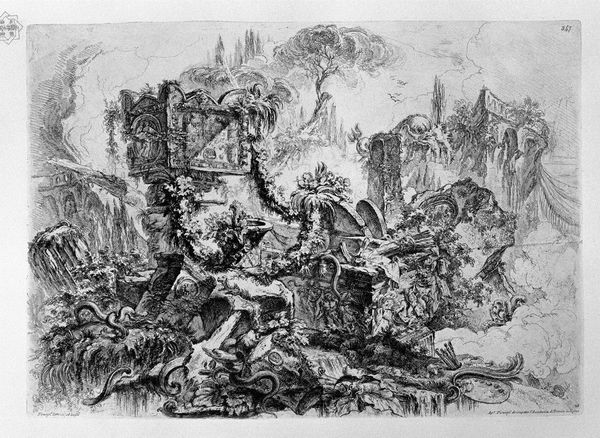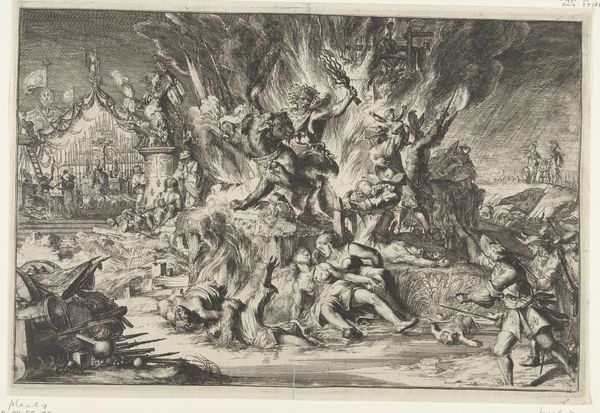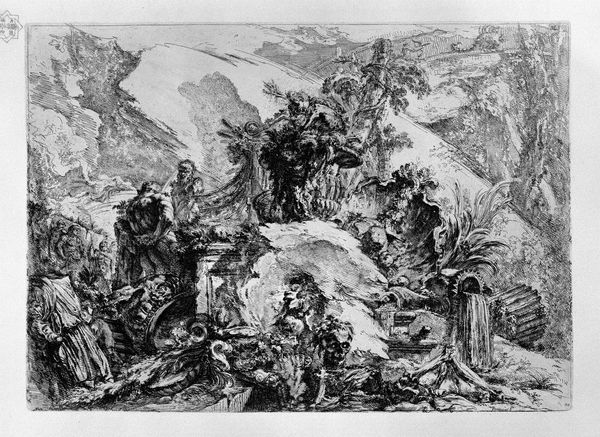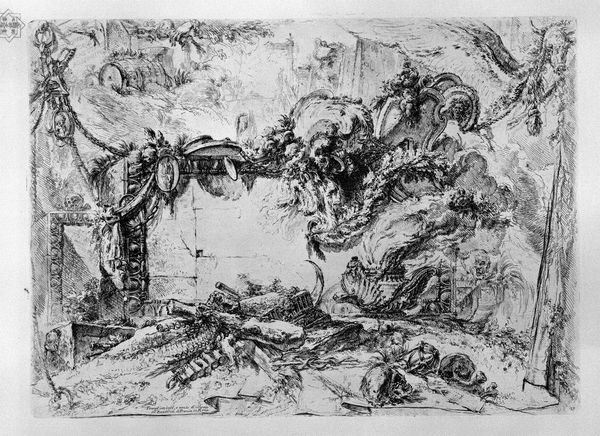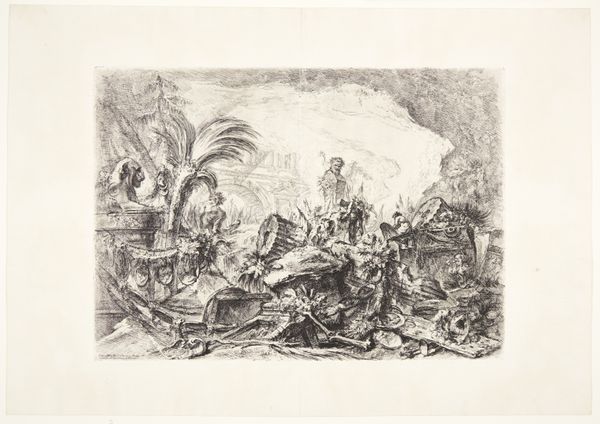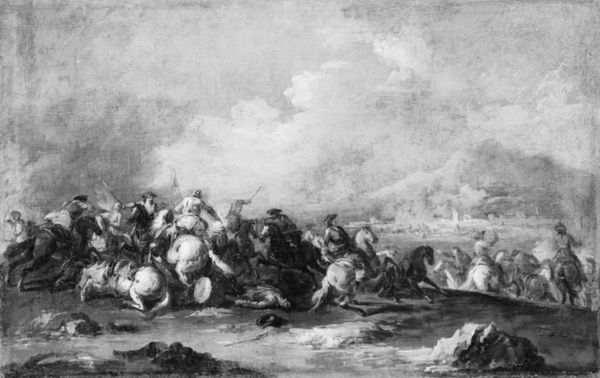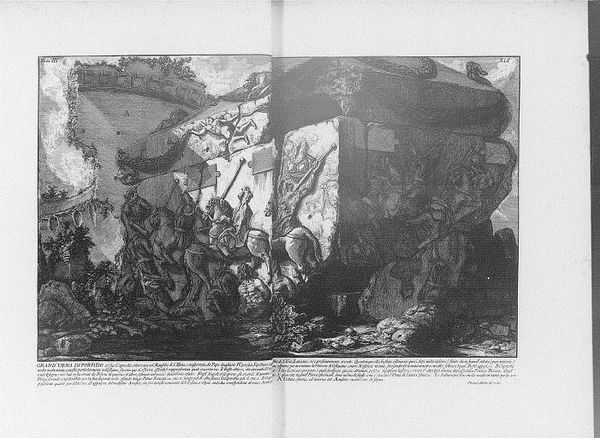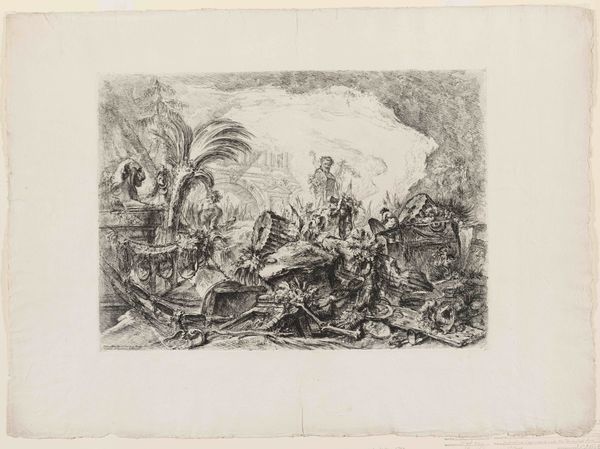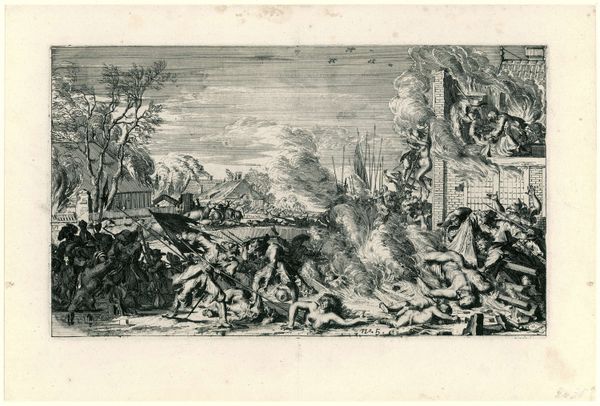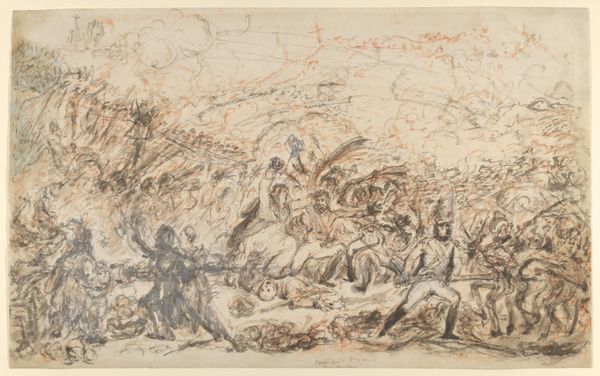
Caprice decorative figures in the center around a small Eramo faun, a triumphal arch at the bottom of the light etching, in the very back of a faun, a palm, Egyptian and half lion; bottom disparatissimi objects in bulk 1748
0:00
0:00
print, etching
#
baroque
# print
#
etching
#
landscape
#
figuration
Copyright: Public domain
Giovanni Battista Piranesi made this light etching, ‘Caprice’ in 18th century Italy. The image presents a complex scene that seems to revel in the theatricality of ancient ruins and symbolic motifs, reflecting the contemporary fascination with classical antiquity. Piranesi creates meaning through a visual language steeped in cultural references. The triumphal arch, the faun, the Egyptian and half-lion figures all evoke the grandeur of past civilizations, filtered through the lens of 18th-century aesthetic sensibilities. Italy at the time was at the heart of the Grand Tour, a rite of passage for wealthy Europeans, who sought to immerse themselves in its rich cultural heritage. Piranesi's work catered to this market, offering romanticized visions of Rome's glorious past. As historians, we can use archival materials, travel accounts, and architectural treatises to further unpack Piranesi's visual language. By exploring the relationship between art, patronage, and cultural tourism, we can understand how the meaning of art is contingent on its social and institutional context.
Comments
No comments
Be the first to comment and join the conversation on the ultimate creative platform.

